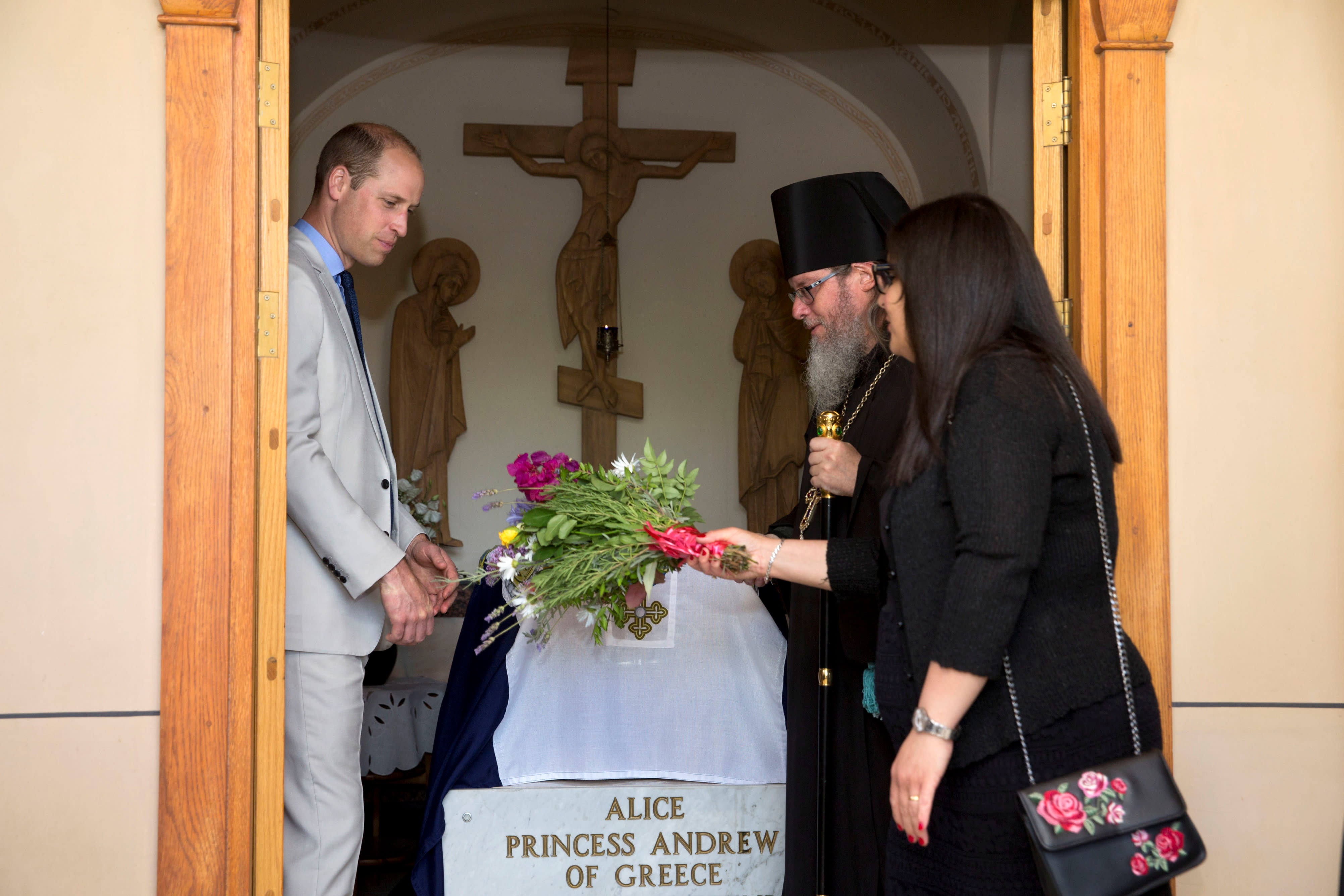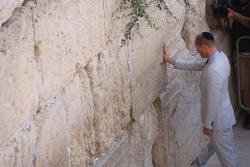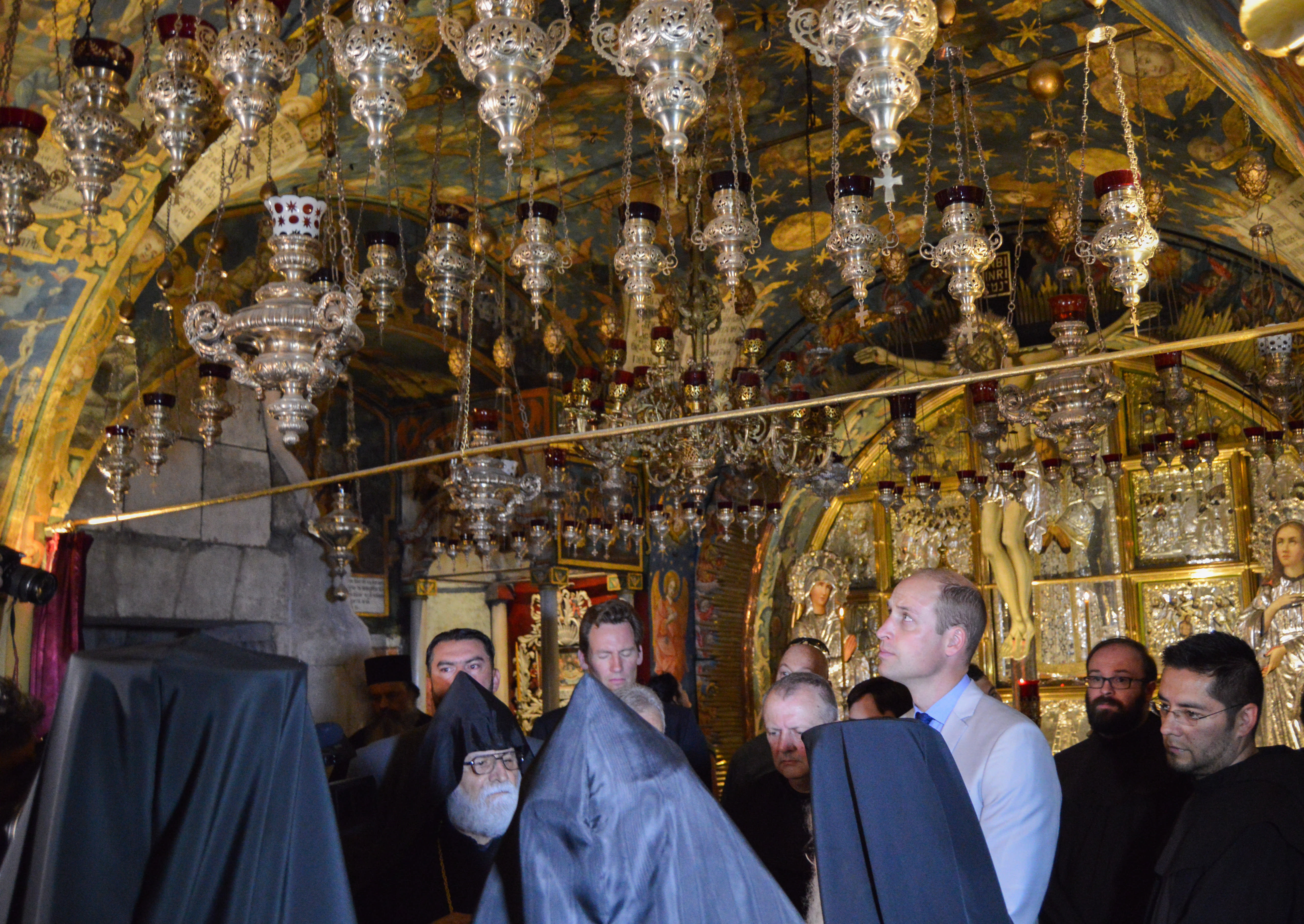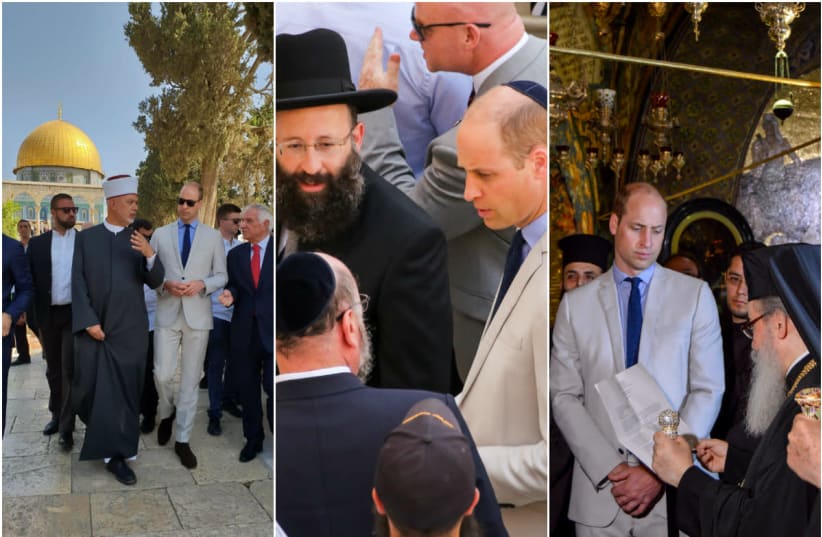Annie Kara from California waits to catch a lumps of Prince William pic.twitter.com/NsCpk1xhIt
— Tovah Lazaroff (@tovahlazaroff) June 28, 2018
The prince began his morning at a viewpoint of the Mount of Olives, before heading to the Church of Mary Magdalene and to its Garden of Gethsemane, where his great-grandmother Princess Alice is buried. Prince William laid a wreath of flowers at her grave, which is covered in a white cloth, and lit a candle.Terry Charalambous of Australia was surprised but excited to learn Prince William is about to pass by pic.twitter.com/Qig23fVG3C
— Tovah Lazaroff (@tovahlazaroff) June 28, 2018



